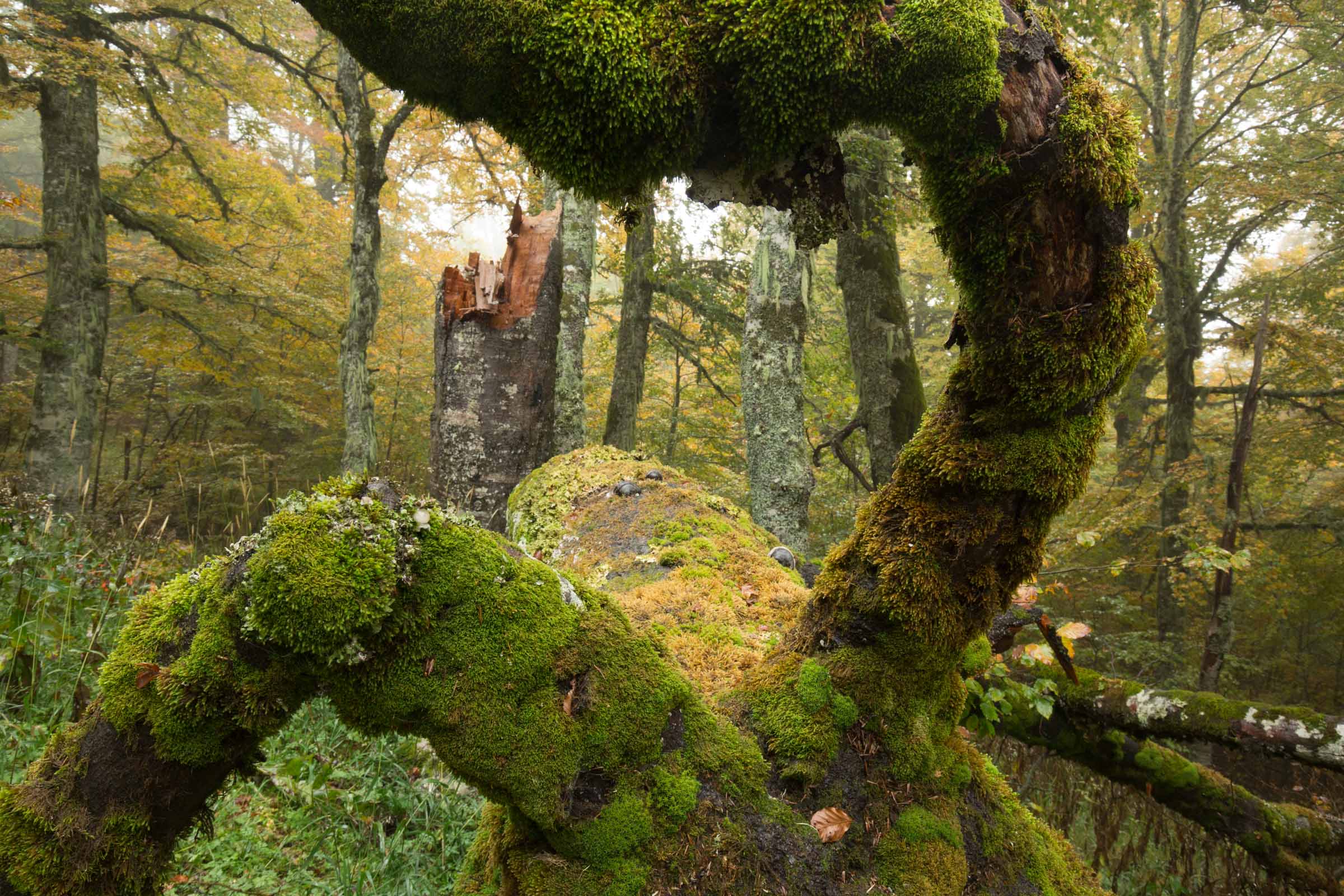Large structural and compositional changes, compared to the natural state, are the result of major anthropogenic impacts in the past that almost all European forests have been subjected to (da Silva et al.,2019; Machado, 2004; Reif and Walentowski, 2008; Winter, 2012). Central Europe’s forest landscape is characterised by different forest types and management intensities ranging from production forests to strictly protected areas, such as national parks or strict forest reserves (Meyer et al., 2021).
It has been estimated that not more than 0.7% of the forest area in Europe are primeval forest (Sabaatini et al., 2018). Most importantly are the World Natural Heritage sites of the ‘Ancient and Primeval Beech Forests of the Carpathians and Other Regions of Europe’. Germany’s National heritage sites show a high potential to contribute to the German National Strategy on Biological Diversity (NBS), aiming at wilderness areas (2%) and forested areas left to natural development (5%) (BMU, 2007). In the past, many of these areas used to be military training areas, comprising large and relatively undisturbed landscapes of forests and open habitats (Meyer et al., 2021). In order to increase the naturalness degree, the majority of these forests are still managed with ‘leaving them to natural development’ as the ultimate goal (Culmsee et al., 2015).
The research of Meyer and colleagues aimed to develop and apply an indicator to quantify the old-growthness of forest structure on beech forest sites in Central Europe. Structural variables were derived from sample plot inventories in European primeval beech forests, classified as old-growth, of Eastern Slovakia and from 39 comparison stands with different characteristics, such as management intensity, age and tree species composition, of the North German lowlands.
They concluded that the old-growth indicator is suitable to scrutinise the pace and direction of forest development toward old-growthness (Meyer, 2018). A high degree of old-growthness should coincide with low management intensity, which should be a general rule (Meyer, 2018). It is undeniable that the old-growth state coming from small-scale disturbances and maturation is a central element of a natural forest landscape.
Meyer et al. does not claim that their approach is sufficient to cover all aspects of the complex notion of naturalness, however, it influences a solution to quantify naturalness in respect of a certain state of natural forests that is highly important for the conservation of biodiversity.
.
.
.
Want to read the full article? Visit: https://www.sciencedirect.com/science/article/pii/S1470160X21002405?via%3Dihub
